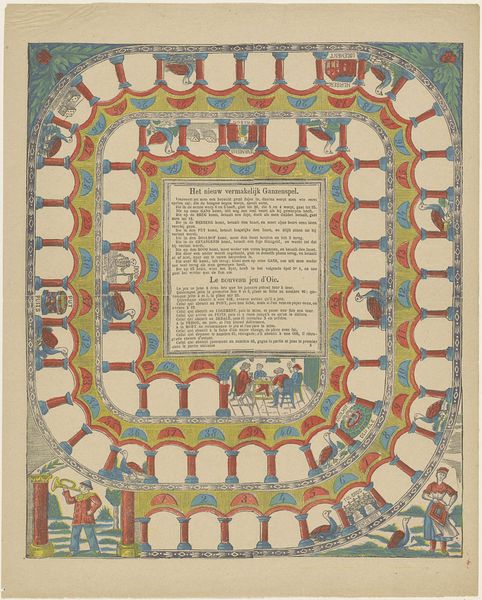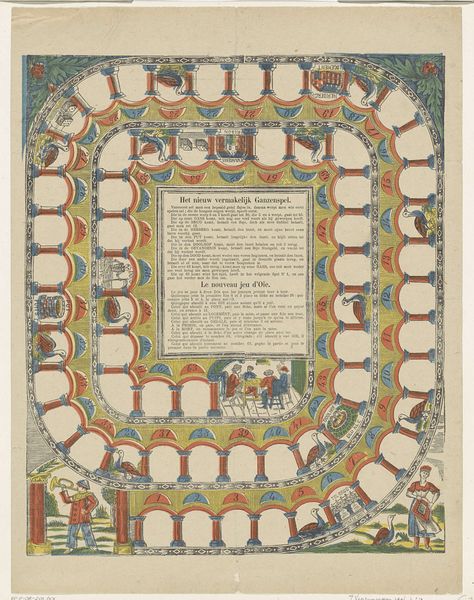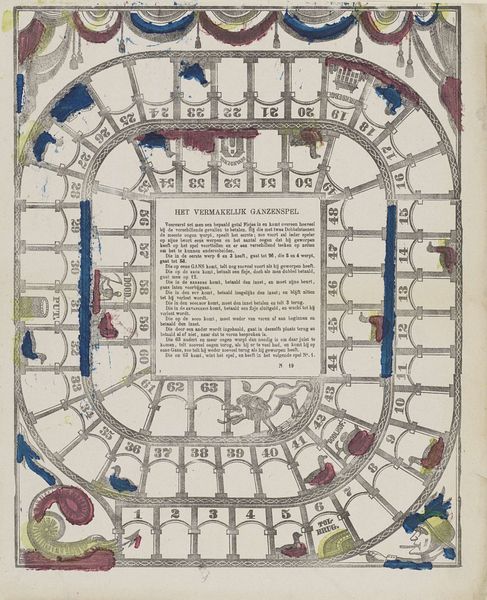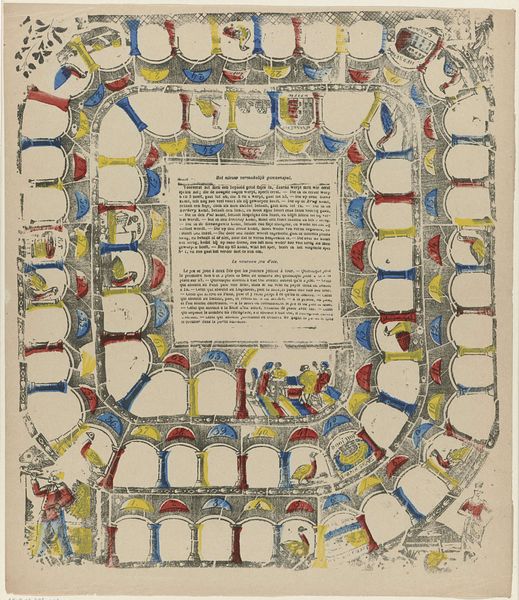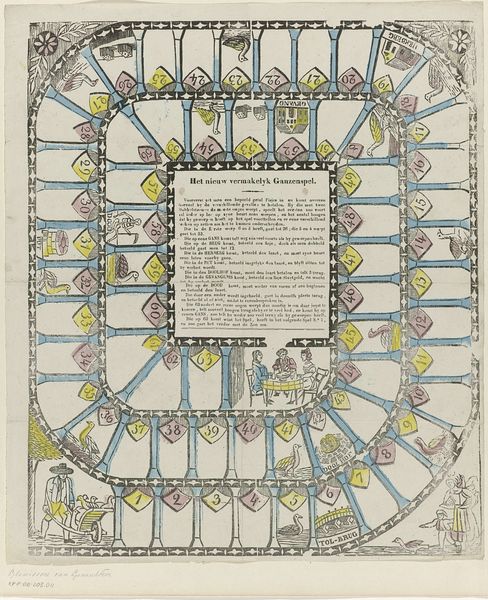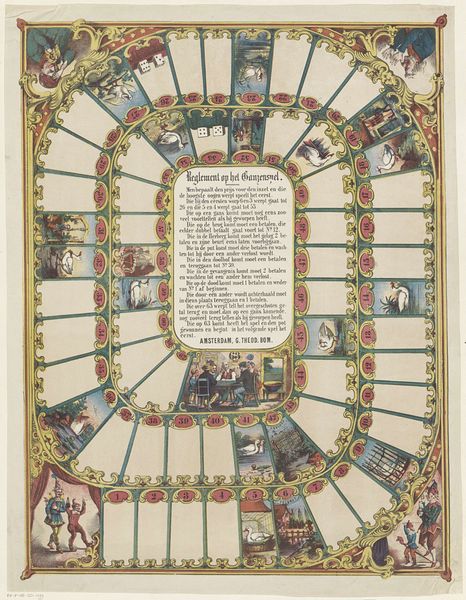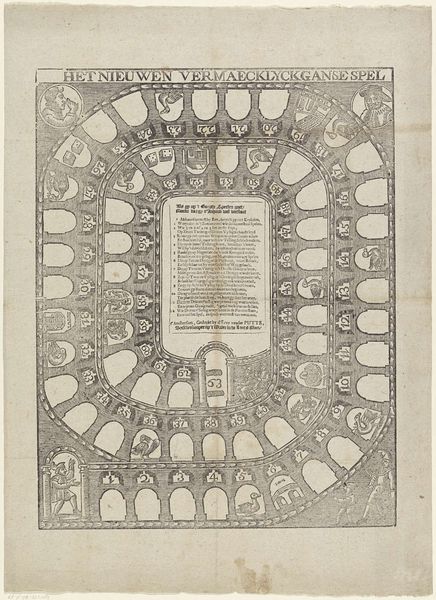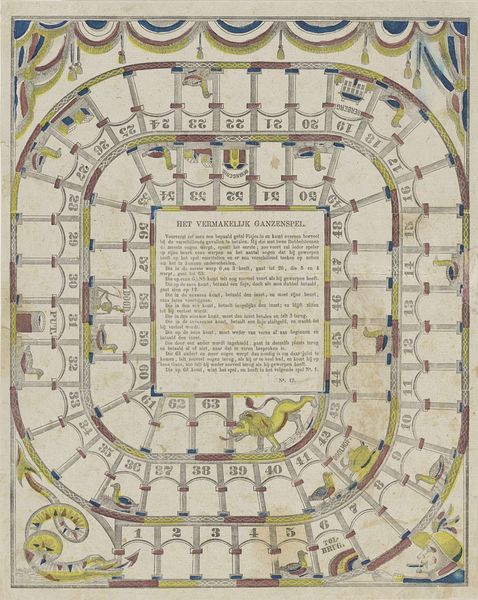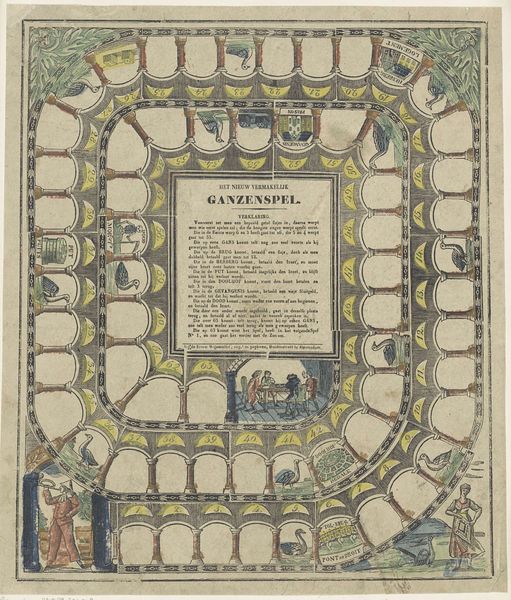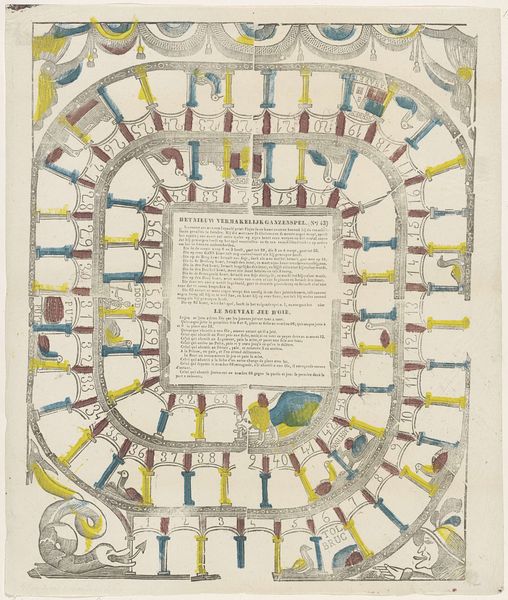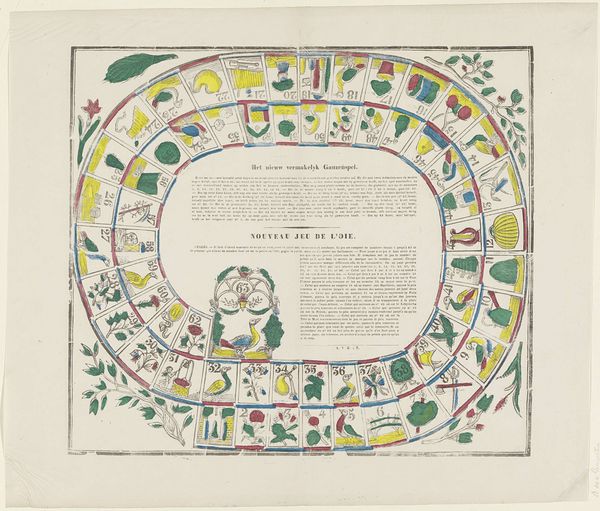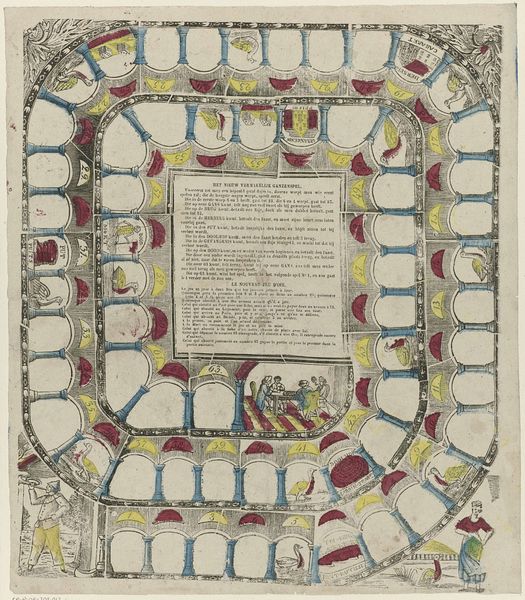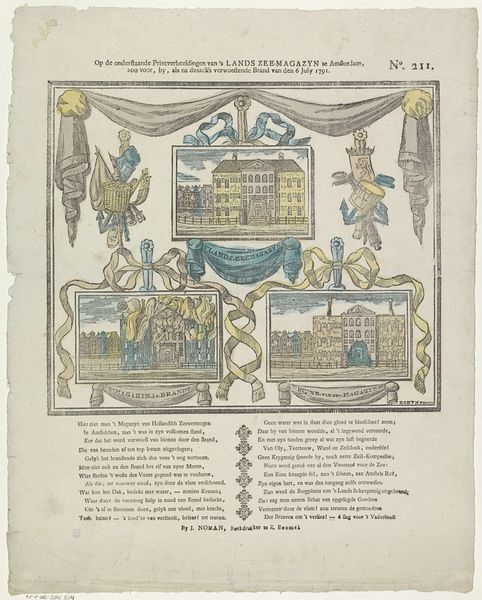
graphic-art, print, paper, watercolor
#
graphic-art
# print
#
paper
#
watercolor
#
genre-painting
#
decorative-art
#
watercolor
Dimensions: height 453 mm, width 360 mm
Copyright: Rijks Museum: Open Domain
Curator: Here we have “Vermakelijk ganzenspel / Jeu d'oie,” a watercolor print dating from 1897 to 1902 and produced by the weduwe en dochter Beersmans-Pleek. Doesn't it strike you as immediately familiar, like something from a childhood long past? Editor: It has this lovely antique quality, a washed-out elegance that pulls me in. I see a circular game board; are those numbered arches that delineate the path? There's such detailed handwork. One immediately recognizes the care taken to construct the world, this decorative scene by the women Beersmans-Pleek. What can you tell me of it? Curator: Well, the imagery here is dense. Notice the geese sprinkled around, each space hinting at chance, risk, or reward. The Goose Game, or "Jeu d'oie," is, in essence, an archetypal quest, mirroring life's journey with all its unexpected turns. The geese themselves symbolize guidance, but also folly. We're drawn onward, like those playing. Editor: And look at the printing itself, probably lithography based on its fineness. You see how that delicate watercolour wash really softens the line? Each one would need to have been colored meticulously by hand. The women would have gained skill through labor; it shows a lineage of craft production. But this "fun game" also carries implications regarding commodification; prints like these made recreation accessible. Curator: Precisely! The appeal rests not just on artistic merit but its symbolic power as well, embodying a certain bourgeois domesticity—shared laughter, maybe mild competition. And perhaps even gentle satire—after all, are not geese creatures associated also with silliness? One has to wonder at what lessons regarding fortune and chance are we imbibing. Editor: So true, and yet, there is a social element. What did leisure *mean* in that epoch and context, given working conditions? Mass-produced enjoyment might become an ideological vehicle. By purchasing such games one accepts a value system that frames leisure around competition, and so perhaps work also? Curator: Well, looking closely again, I'm newly aware of a timeless aspect, and a visual encoding that hints that regardless of progress our playful needs remain consistent across time. Editor: For me the enduring quality relates more directly to tangible making and physical work—how many games needed completion to bring financial freedom? But how does each stage of handmaking reflect an individual history too? It is through these objects, one really *does* enter a complex discussion of social history.
Comments
No comments
Be the first to comment and join the conversation on the ultimate creative platform.
